|
Partners and Strangers:
The Mind-Body Relationship in History
Lilian R. Furst
Chapel Hill, N.C.
|
 |
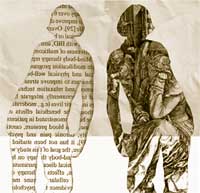 |
 The question of the mind-body relationship has intrigued – and bedeviled – philosophers, theologians and psychologists, as well as medical practitioners, throughout the ages. Even today, at the opening of the 21st century, despite the momentous advances made by medicine, it still defies complete understanding of its multiple manifestations and, above all, of its precise mechanisms. The question of the mind-body relationship has intrigued – and bedeviled – philosophers, theologians and psychologists, as well as medical practitioners, throughout the ages. Even today, at the opening of the 21st century, despite the momentous advances made by medicine, it still defies complete understanding of its multiple manifestations and, above all, of its precise mechanisms.
Holistic beginnings
 The history of the mind-body link is especially fascinating for the swings of the pendulum it has undergone in response to – and as an expression of – shifting beliefs and paradigms. “Until the mid-19th century . . . all medicine was necessarily and ubiquitously ‘psychosomatic’,” the eminent medical historian Charles Rosenberg has asserted in his incisive article “Body and mind in nineteenth-century medicine” [1]. Why “necessarily and ubiquitously”? The necessity stemmed partly from the absence of knowledge about the workings of either the mind or body so that physicians had no alternative but to resort to the speculative theories current at their time. From the days of Galen, who was born in A.D. 130, the ubiquitous theory was that of the four “humors” which corresponded to the four elements: earth, air, water and fire. In the human being, these became manifest as cold, dry, moist or hot temperaments. Good health resulted from an equal balance of the four; illness, on the other hand, arose when one or the other got the upper hand. The therapeutic corrective was to apply the opposite: hot to cold, dry to moist, and so forth. In practice the most crucial facet of this system was its total reliance on an approach that was at once holistic and fundamentally individual. Since every patient had his or her particular temperament, the physician’s primary task was to identify the prevalent humor in order to select the appropriate counteragent to the illness. External factors such as season, climate and age also played an important role in both diagnosis and remedy. One direct consequence of this overarching emphasis on the patient’s individuality was the need for the physician to have an intimate, extended familiarity with the sick person. The greater and deeper the physician’s knowledge of his patient, the greater the likelihood that he would be able to prescribe the optimum mode of treatment. The crux of this system was the conviction that illness and, therefore, treatment were patient specific and invariably individual. The aim of medicine, to restore homeostasis, rested squarely on the unquestioned supposition of the reciprocity of mind and body. The history of the mind-body link is especially fascinating for the swings of the pendulum it has undergone in response to – and as an expression of – shifting beliefs and paradigms. “Until the mid-19th century . . . all medicine was necessarily and ubiquitously ‘psychosomatic’,” the eminent medical historian Charles Rosenberg has asserted in his incisive article “Body and mind in nineteenth-century medicine” [1]. Why “necessarily and ubiquitously”? The necessity stemmed partly from the absence of knowledge about the workings of either the mind or body so that physicians had no alternative but to resort to the speculative theories current at their time. From the days of Galen, who was born in A.D. 130, the ubiquitous theory was that of the four “humors” which corresponded to the four elements: earth, air, water and fire. In the human being, these became manifest as cold, dry, moist or hot temperaments. Good health resulted from an equal balance of the four; illness, on the other hand, arose when one or the other got the upper hand. The therapeutic corrective was to apply the opposite: hot to cold, dry to moist, and so forth. In practice the most crucial facet of this system was its total reliance on an approach that was at once holistic and fundamentally individual. Since every patient had his or her particular temperament, the physician’s primary task was to identify the prevalent humor in order to select the appropriate counteragent to the illness. External factors such as season, climate and age also played an important role in both diagnosis and remedy. One direct consequence of this overarching emphasis on the patient’s individuality was the need for the physician to have an intimate, extended familiarity with the sick person. The greater and deeper the physician’s knowledge of his patient, the greater the likelihood that he would be able to prescribe the optimum mode of treatment. The crux of this system was the conviction that illness and, therefore, treatment were patient specific and invariably individual. The aim of medicine, to restore homeostasis, rested squarely on the unquestioned supposition of the reciprocity of mind and body.
 This essential interdependence of soma and psyche remained the foundation of medical theory and practice certainly into the first third of the 19th century and indeed later, particularly in more remote regions removed from the orbit of innovative advances. This is not to minimize the significant progress made in the 16th to 18th centuries. To cite just some of the leading discoveries: Andreas Vesalius (1514–64) mapped human anatomy; William Harvey (1578–1657) traced the circulation of the blood; Giovanni Morgagni (1682–1771) made the first attempts to relate clinical findings to the results of autopsies. But these early medical advances were, except for the work of Morgagni, concerned with the functioning of the body in good health and did not prejudice the continuing acceptance of the close connection between mind and body, based on evidence accumulated from the observation of living patients. This essential interdependence of soma and psyche remained the foundation of medical theory and practice certainly into the first third of the 19th century and indeed later, particularly in more remote regions removed from the orbit of innovative advances. This is not to minimize the significant progress made in the 16th to 18th centuries. To cite just some of the leading discoveries: Andreas Vesalius (1514–64) mapped human anatomy; William Harvey (1578–1657) traced the circulation of the blood; Giovanni Morgagni (1682–1771) made the first attempts to relate clinical findings to the results of autopsies. But these early medical advances were, except for the work of Morgagni, concerned with the functioning of the body in good health and did not prejudice the continuing acceptance of the close connection between mind and body, based on evidence accumulated from the observation of living patients.
 On the contrary, expressions of belief in the unity of mind and body crop up frequently throughout the 17th to the mid-19th centuries. For example, Thomas Sydenham (1624–89), the preeminent British physician of his time, declared repeatedly and unequivocally that psychological factors were involved in pathogenesis. A series of monographs appeared in the 18th century that sought to offer a systematic presentation of contemporary thought on the influence of the mind upon the body. William Corp’s Essay on the Changes Produced in the Body by the Operations of the Mind (1791) and William Falconer’s Dissertation on the Influence of the Passions upon the Disorders of the Body (1788) discuss both the potentially deleterious and the beneficial effects of the patient’s mental status on his or her physical condition. It was universally recognized that thoughts and feelings, such as grief, anger, anxiety and fear on the negative side, or hope and joy on the positive, could have a mediated impact on the patient’s bodily disarray or well-being. On the contrary, expressions of belief in the unity of mind and body crop up frequently throughout the 17th to the mid-19th centuries. For example, Thomas Sydenham (1624–89), the preeminent British physician of his time, declared repeatedly and unequivocally that psychological factors were involved in pathogenesis. A series of monographs appeared in the 18th century that sought to offer a systematic presentation of contemporary thought on the influence of the mind upon the body. William Corp’s Essay on the Changes Produced in the Body by the Operations of the Mind (1791) and William Falconer’s Dissertation on the Influence of the Passions upon the Disorders of the Body (1788) discuss both the potentially deleterious and the beneficial effects of the patient’s mental status on his or her physical condition. It was universally recognized that thoughts and feelings, such as grief, anger, anxiety and fear on the negative side, or hope and joy on the positive, could have a mediated impact on the patient’s bodily disarray or well-being.
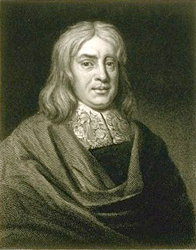
Thomas Sydenham
|
 Outstanding among these treatises are two essays published under the title De regimine mentis (1747 and 1763) by Jerome Gaub (1705–80), a professor of medicine at Leiden, whose work was widely known and heeded in the 18th century [2]. In considering the issue of the relation of body to mind in human ailments, Gaub presented clearly, forcefully and often elegantly a summary of current opinion. His opening section, “The harmony of mind and body” situates him centrally in the tradition of humoral medicine. The vital interplay of mind and body is a recurrent theme of all his essays, as their titles indicate: “Mind and body interaction in the normal state,” “Mind and body interaction in states of imbalance,” “Corporeal effects of expressed and suppressed emotions compared.” Gaub’s advocacy of the mind-body dynamic is impressive; he ends by stating unambiguously that it is “quite plain that the causes and occasions of a great many of the afflictions of the body arise in the mind, as it were from a fountainhead.” Outstanding among these treatises are two essays published under the title De regimine mentis (1747 and 1763) by Jerome Gaub (1705–80), a professor of medicine at Leiden, whose work was widely known and heeded in the 18th century [2]. In considering the issue of the relation of body to mind in human ailments, Gaub presented clearly, forcefully and often elegantly a summary of current opinion. His opening section, “The harmony of mind and body” situates him centrally in the tradition of humoral medicine. The vital interplay of mind and body is a recurrent theme of all his essays, as their titles indicate: “Mind and body interaction in the normal state,” “Mind and body interaction in states of imbalance,” “Corporeal effects of expressed and suppressed emotions compared.” Gaub’s advocacy of the mind-body dynamic is impressive; he ends by stating unambiguously that it is “quite plain that the causes and occasions of a great many of the afflictions of the body arise in the mind, as it were from a fountainhead.”
 The interdependence of mind and body was also acclaimed in the late 18th and early 19th centuries by powerful voices within the medical community. Pierre Jean George Cabanis (1757–1808) issued a stern warning against the medical man who had not learnt to read the human heart as well as to recognize the febrile state. A parallel view was expressed by the distinguished American physician Benjamin Rush (1745–1813) who admonished his colleagues always to see the patient as a single, indivisible being. The interdependence of mind and body was also acclaimed in the late 18th and early 19th centuries by powerful voices within the medical community. Pierre Jean George Cabanis (1757–1808) issued a stern warning against the medical man who had not learnt to read the human heart as well as to recognize the febrile state. A parallel view was expressed by the distinguished American physician Benjamin Rush (1745–1813) who admonished his colleagues always to see the patient as a single, indivisible being.
 The ubiquity and persistence of such beliefs is also reflected in 19th-century fiction in which a good many characters are portrayed as suffering from bodily afflictions that seem to stem from some kind of psychological stress. Lisa, the young girl in Dostoevsky’s Brothers Karamazov (1880), is confined to a wheelchair with her legs paralyzed at the beginning of the novel, but is suddenly and spontaneously cured once she escapes her scheming mother’s nefarious clutches. No less than four of the main figures in Charlotte Brontë’s Shirley (1849) display states that devolve from a fusion of psyche and soma. Likewise, Balzac’s novel Le Cousin Pons (1847) traces the decline and death of a musician after he comes to realize the viciousness of the very people he had most trusted as his friends. But by far the most widespread malady of the time was the brain fever that invariably followed a severe shock of some type [3, 4]. The most famous cases are those of Emma in Flaubert’s Madame Bovary (1857) who falls into a nearly fatal state when her lover, Rodolphe, jilts her, and Catherine Linton in Emily Brontë’s Wuthering Heights (1847) who succumbs to the fever. Similar instances abound: Pip in Dickens’s Great Expectations (1860–61), Roghozin in Dostoevsky’s The Idiot (1869) and a number of Sherlock Holmes’s protagonists when they find themselves boxed into untenable situations. The prostration, loss of memory and confusion characteristic of these so-called brain fevers seem to point to a form of post-traumatic stress disorder rather than a neurological disease. The ubiquity and persistence of such beliefs is also reflected in 19th-century fiction in which a good many characters are portrayed as suffering from bodily afflictions that seem to stem from some kind of psychological stress. Lisa, the young girl in Dostoevsky’s Brothers Karamazov (1880), is confined to a wheelchair with her legs paralyzed at the beginning of the novel, but is suddenly and spontaneously cured once she escapes her scheming mother’s nefarious clutches. No less than four of the main figures in Charlotte Brontë’s Shirley (1849) display states that devolve from a fusion of psyche and soma. Likewise, Balzac’s novel Le Cousin Pons (1847) traces the decline and death of a musician after he comes to realize the viciousness of the very people he had most trusted as his friends. But by far the most widespread malady of the time was the brain fever that invariably followed a severe shock of some type [3, 4]. The most famous cases are those of Emma in Flaubert’s Madame Bovary (1857) who falls into a nearly fatal state when her lover, Rodolphe, jilts her, and Catherine Linton in Emily Brontë’s Wuthering Heights (1847) who succumbs to the fever. Similar instances abound: Pip in Dickens’s Great Expectations (1860–61), Roghozin in Dostoevsky’s The Idiot (1869) and a number of Sherlock Holmes’s protagonists when they find themselves boxed into untenable situations. The prostration, loss of memory and confusion characteristic of these so-called brain fevers seem to point to a form of post-traumatic stress disorder rather than a neurological disease.
 The climax – and simultaneously the reductio ad absurdum – of the doctrine (for such it had become) of the mind-body relationship comes in the antics of Franz Anton Mesmer (1734–1815). It is hard to know how to designate him for he was considered a veritable magician by some and no more than a mere charlatan by others. After completing his medical studies in Vienna in 1766 and being banished for having caused scandal, he moved to Paris where he conducted a sort of medical practice in the form of a salon. On the postulate of an imponderable fluid that permeates the entire universe, infusing both mind and matter, he used magnets to redistribute this fluid within the patient so as to restore equilibrium in a manner reminiscent of the homeostasis sought by humoral medicine. Intuitively aware of the psychological dimensions of many illnesses, Mesmer also induced spellbinding trances and had recourse to forceful interpersonal suggestion and rites of exorcism to re-establish a healing link between mind and body. Mesmer’s practices are remarkable for their mingling of quackery, showmanship, and an instinctive grasp of the interplay of mind and body. The climax – and simultaneously the reductio ad absurdum – of the doctrine (for such it had become) of the mind-body relationship comes in the antics of Franz Anton Mesmer (1734–1815). It is hard to know how to designate him for he was considered a veritable magician by some and no more than a mere charlatan by others. After completing his medical studies in Vienna in 1766 and being banished for having caused scandal, he moved to Paris where he conducted a sort of medical practice in the form of a salon. On the postulate of an imponderable fluid that permeates the entire universe, infusing both mind and matter, he used magnets to redistribute this fluid within the patient so as to restore equilibrium in a manner reminiscent of the homeostasis sought by humoral medicine. Intuitively aware of the psychological dimensions of many illnesses, Mesmer also induced spellbinding trances and had recourse to forceful interpersonal suggestion and rites of exorcism to re-establish a healing link between mind and body. Mesmer’s practices are remarkable for their mingling of quackery, showmanship, and an instinctive grasp of the interplay of mind and body.
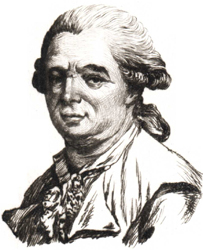
Frank Anton Mesmer
|
The technological hiatus
 What then happened, largely in the first half of the 19th century, to reverse this trend, to elevate the body to the prime site in the discipline of medicine while relegating the mind to a subservient position? Put in a nutshell, the decisive turn was consequent to the invention of a series of instruments that enabled doctors to attain a better understanding of the body’s functioning literally through in-sight beneath its surface. The first and perhaps most important of these instruments was the stethoscope devised in 1816 by the Breton René-Théophile-Hyacinthe Laënnec (1781–1826). Instead of having to depend on patients’ subjective accounts of their symptoms, the physician could now, by means of the stethoscope, rely on his own interpretation of the sounds he himself heard, differentiating, for example, through his experience with abnormalities of the lungs, between pneumonia, pleurisy and tuberculosis. The practice of medicine could thus become more objective and more scientific. Other instruments that came into use in the course of the 19th century, such as the laryngoscope, the bronchoscope, the ophthalmoscope, the endoscope and the urethra-cystic speculum, served the same purpose as the stethoscope in achieving objective diagnoses by penetrating beneath the body’s exterior. The culmination of this development was the introduction of X-rays by Wilhelm Konrad Röntgen (1845–1923) in 1895. What then happened, largely in the first half of the 19th century, to reverse this trend, to elevate the body to the prime site in the discipline of medicine while relegating the mind to a subservient position? Put in a nutshell, the decisive turn was consequent to the invention of a series of instruments that enabled doctors to attain a better understanding of the body’s functioning literally through in-sight beneath its surface. The first and perhaps most important of these instruments was the stethoscope devised in 1816 by the Breton René-Théophile-Hyacinthe Laënnec (1781–1826). Instead of having to depend on patients’ subjective accounts of their symptoms, the physician could now, by means of the stethoscope, rely on his own interpretation of the sounds he himself heard, differentiating, for example, through his experience with abnormalities of the lungs, between pneumonia, pleurisy and tuberculosis. The practice of medicine could thus become more objective and more scientific. Other instruments that came into use in the course of the 19th century, such as the laryngoscope, the bronchoscope, the ophthalmoscope, the endoscope and the urethra-cystic speculum, served the same purpose as the stethoscope in achieving objective diagnoses by penetrating beneath the body’s exterior. The culmination of this development was the introduction of X-rays by Wilhelm Konrad Röntgen (1845–1923) in 1895.
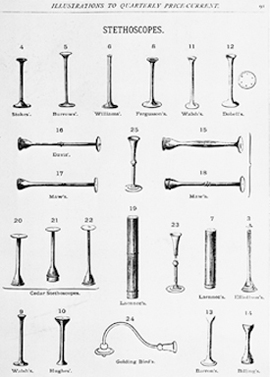
Nineteenth-century stethoscopes (catalog illustration, 1869; National Library of Medicine, Bethesda, Md.)
|
 The entire conceptualization of medicine was radically transformed not only by the application of this battery of instruments but also by the combination of their findings with those of the pathological anatomy initiated at the very opening of the century by Marie-François-Xavier Bichat (1771–1802). By conducting hundreds of autopsies in winter (the smell was too bad in summer), Bichat saw distinctive lesions in particular organs and realized that the source of disease was a local abnormality. This discovery instigated one of the most fundamental revolutions in the history of medicine: the turn away from the patient specificity of earlier times to the disease specificity of modern medicine. Instead of envisaging the whole body and mind as out of balance, in the wake of Bichat, doctors sought to pinpoint the singular lesion at the core of the patient’s symptoms. What is more, the categoric ravages that Bichat found in cadavers as the telltale signs of particular diseases could be directly related to the sounds emitted by the living patient and picked up on the stethoscope. The connection between what was audible in the patient and what was visible in the cadaver allowed doctors to deduce a firmly grounded taxonomy. The conjunction between the damage uncovered by pathological anatomy and the findings produced by the new instruments accomplished the transition to a scientifically based practice rooted in pragmatically established facts. Some 50 years after Bichat, Rudolf Virchow (1821–1902) in his famous work Cellular Pathology (1858), engaged in the comparative analysis of healthy and diseased tissues. The entire conceptualization of medicine was radically transformed not only by the application of this battery of instruments but also by the combination of their findings with those of the pathological anatomy initiated at the very opening of the century by Marie-François-Xavier Bichat (1771–1802). By conducting hundreds of autopsies in winter (the smell was too bad in summer), Bichat saw distinctive lesions in particular organs and realized that the source of disease was a local abnormality. This discovery instigated one of the most fundamental revolutions in the history of medicine: the turn away from the patient specificity of earlier times to the disease specificity of modern medicine. Instead of envisaging the whole body and mind as out of balance, in the wake of Bichat, doctors sought to pinpoint the singular lesion at the core of the patient’s symptoms. What is more, the categoric ravages that Bichat found in cadavers as the telltale signs of particular diseases could be directly related to the sounds emitted by the living patient and picked up on the stethoscope. The connection between what was audible in the patient and what was visible in the cadaver allowed doctors to deduce a firmly grounded taxonomy. The conjunction between the damage uncovered by pathological anatomy and the findings produced by the new instruments accomplished the transition to a scientifically based practice rooted in pragmatically established facts. Some 50 years after Bichat, Rudolf Virchow (1821–1902) in his famous work Cellular Pathology (1858), engaged in the comparative analysis of healthy and diseased tissues.
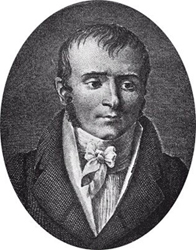
Marie-Francois-Xavier Bichat
|
 The scientific approach was also furthered by the introduction in the 1860s and 1870s of the numerical method sponsored by the French researcher Pierre-Charles-Alexandre Louis (1787–1872) who championed statistics on the grounds that truth resided in objective facts. Meanwhile, improvements in the power and accuracy of microscopes paved the way for the extraordinary advances in bacteriology made by the French chemist Louis Pasteur (1822–95) and the German country doctor Robert Koch (1843–1910), who succeeded in identifying a diverse spectrum of microorganisms and isolating each of them as the cause of a particular infection. The scientific approach was also furthered by the introduction in the 1860s and 1870s of the numerical method sponsored by the French researcher Pierre-Charles-Alexandre Louis (1787–1872) who championed statistics on the grounds that truth resided in objective facts. Meanwhile, improvements in the power and accuracy of microscopes paved the way for the extraordinary advances in bacteriology made by the French chemist Louis Pasteur (1822–95) and the German country doctor Robert Koch (1843–1910), who succeeded in identifying a diverse spectrum of microorganisms and isolating each of them as the cause of a particular infection.
 This spectacular progress in the understanding of the body made during the course of the 19th century had as its unfortunate corollary a neglect of the mind. Psychiatry had already been held in low esteem in the 18th century when its practitioners were called “mad doctors” because they functioned mainly as custodians of the insane and the mentally disturbed. With the increasing emphasis on the body in the 19th century, the mind was largely pushed aside. The disparity between the respective knowledge of the body and the mind had become glaring by the last third of the century. The problem was compounded by the displacement of psychiatry by the new discipline of neurology, whose focus was on the study of the brain, i.e. the physical aspects of mental activity. The German Wilhelm Griesinger (1817–68) was the major proponent of neuropsychiatry, which argued that mental disorders were actually diseases of the brain. This spectacular progress in the understanding of the body made during the course of the 19th century had as its unfortunate corollary a neglect of the mind. Psychiatry had already been held in low esteem in the 18th century when its practitioners were called “mad doctors” because they functioned mainly as custodians of the insane and the mentally disturbed. With the increasing emphasis on the body in the 19th century, the mind was largely pushed aside. The disparity between the respective knowledge of the body and the mind had become glaring by the last third of the century. The problem was compounded by the displacement of psychiatry by the new discipline of neurology, whose focus was on the study of the brain, i.e. the physical aspects of mental activity. The German Wilhelm Griesinger (1817–68) was the major proponent of neuropsychiatry, which argued that mental disorders were actually diseases of the brain.
 Efforts were made to clothe all illness in somatic garb on the supposition of some as yet undiscovered lesion. This approach was encouraged by the recognition that delirium tremens stemmed from the abuse of alcohol and that the general paralysis of the insane was a consequence of syphilitic infection. Lesions won out over feelings, the body over the mind. One curious instance of this tendency was the affliction popular in the later 19th century, neurasthenia, which was literally invented by the American physician George M. Beard (1839–83), who launched the syndrome in an article in the Boston Medical and Surgical Journal of 1869. Neurasthenia as a weakness of the nerve centers, often the result of overwork, was essentially a physical malady without any of the stigma attached to mental illness. So Margaret Cleaves, a New York doctor, was assured in the later 1880s that she had “sprained her brain” [5, 6]. Efforts were made to clothe all illness in somatic garb on the supposition of some as yet undiscovered lesion. This approach was encouraged by the recognition that delirium tremens stemmed from the abuse of alcohol and that the general paralysis of the insane was a consequence of syphilitic infection. Lesions won out over feelings, the body over the mind. One curious instance of this tendency was the affliction popular in the later 19th century, neurasthenia, which was literally invented by the American physician George M. Beard (1839–83), who launched the syndrome in an article in the Boston Medical and Surgical Journal of 1869. Neurasthenia as a weakness of the nerve centers, often the result of overwork, was essentially a physical malady without any of the stigma attached to mental illness. So Margaret Cleaves, a New York doctor, was assured in the later 1880s that she had “sprained her brain” [5, 6].
 But the mind and the caprices of the imagination could not be so readily banished once and for all, even though they remained an enigma. A curious, neglected work, Illustrations of the Influence of the Mind upon the Body in States of Health and Disease, Designed to Elucidate the Action of the Imagination was published in 1872 by Daniel Hack Tuke (1827–95), a physician who had practiced for many years before having to take extended rest on account of tuberculosis. Tuke reflects on the many puzzling cases he had experienced in which feelings such as joy, fear, anxiety or disappointed ambition had precipitated physical reactions. He recalls a 20-year-old woman who lost the power of speech after seeing a mouse run under a table, another woman who was hospitalized in a catatonic state for 3 weeks after seeing one of her children scald herself, an 8-year-old girl who, on being separated from her mother, exhibited delirium, headaches and an inability to stand, resistant to every form of treatment, yet who recovered as soon as she was reunited with her mother. Tuke is perplexed by what he calls these “psycho-physical phenomena.” While recognizing and illustrating the involvement of the imagination, he is quite at a loss to explain it. He therefore falls back lamely on the standard physicalist language of his time by reference to spasms, contractures, vaso-motor nerves and cerebral ischemia. Tuke senses that other factors are at work too, but he is ultimately unable to “elucidate” them satisfactorily [7]. But the mind and the caprices of the imagination could not be so readily banished once and for all, even though they remained an enigma. A curious, neglected work, Illustrations of the Influence of the Mind upon the Body in States of Health and Disease, Designed to Elucidate the Action of the Imagination was published in 1872 by Daniel Hack Tuke (1827–95), a physician who had practiced for many years before having to take extended rest on account of tuberculosis. Tuke reflects on the many puzzling cases he had experienced in which feelings such as joy, fear, anxiety or disappointed ambition had precipitated physical reactions. He recalls a 20-year-old woman who lost the power of speech after seeing a mouse run under a table, another woman who was hospitalized in a catatonic state for 3 weeks after seeing one of her children scald herself, an 8-year-old girl who, on being separated from her mother, exhibited delirium, headaches and an inability to stand, resistant to every form of treatment, yet who recovered as soon as she was reunited with her mother. Tuke is perplexed by what he calls these “psycho-physical phenomena.” While recognizing and illustrating the involvement of the imagination, he is quite at a loss to explain it. He therefore falls back lamely on the standard physicalist language of his time by reference to spasms, contractures, vaso-motor nerves and cerebral ischemia. Tuke senses that other factors are at work too, but he is ultimately unable to “elucidate” them satisfactorily [7].
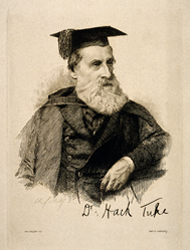
Daniel Hack Tuke
|
 The word “imagination” occurs too, albeit only very rarely and grudgingly, in the work of the brilliant French neurologist Jean-Martin Charcot (1825–93). As head of the enormous Salpêtrière hospital for women in Paris, he presided over what he described as a museum of pathologies affecting all parts of the nervous system. The most favored diagnosis was that of hysteria, which could comprise paralyses, contractures, muteness, deafness, blindness, fixities and so on. In keeping with the trends of his time, Charcot sought by cerebral localization to find the lesions underlying these variegated symptoms. He applied all manner of physical remedies: compression, friction, metallotherapy, massage and electrotherapy. However, somatic medicine could not decipher these disorders, let alone remove them. So, faced with some surprising cures, Charcot came to conclude that “Chez ces femmes la guérison était survenue tout d’un coup, au milieu de circonstances bien propres à émouvoir l’imagination” [“In these women the cure had occurred all of a sudden under circumstances very apt to affect the imagination”] [8]. Nonetheless, despite this concession, Charcot insisted on defining psychology in relation to nervous diseases as the rational physiology of the cerebral cortex – an opaque statement that bears out the 19th century’s predilection for subjugating the psychological to the physiological. The word “imagination” occurs too, albeit only very rarely and grudgingly, in the work of the brilliant French neurologist Jean-Martin Charcot (1825–93). As head of the enormous Salpêtrière hospital for women in Paris, he presided over what he described as a museum of pathologies affecting all parts of the nervous system. The most favored diagnosis was that of hysteria, which could comprise paralyses, contractures, muteness, deafness, blindness, fixities and so on. In keeping with the trends of his time, Charcot sought by cerebral localization to find the lesions underlying these variegated symptoms. He applied all manner of physical remedies: compression, friction, metallotherapy, massage and electrotherapy. However, somatic medicine could not decipher these disorders, let alone remove them. So, faced with some surprising cures, Charcot came to conclude that “Chez ces femmes la guérison était survenue tout d’un coup, au milieu de circonstances bien propres à émouvoir l’imagination” [“In these women the cure had occurred all of a sudden under circumstances very apt to affect the imagination”] [8]. Nonetheless, despite this concession, Charcot insisted on defining psychology in relation to nervous diseases as the rational physiology of the cerebral cortex – an opaque statement that bears out the 19th century’s predilection for subjugating the psychological to the physiological.
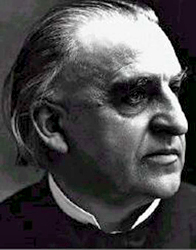
Jean-Martin Charcot
|
 Nor was hysteria the only phenomenon to pose a challenge to the prevailing norms of somatic medicine. The problem of pain without a visible or diagnosable physical injury became a discomforting medical and legal issue with the increase in railroad travel and accidents. Numerous hypotheses were put forward in attempts to account for phenomena that contravened the medical tenets of the day. A pamphlet on “The Influence of Railway Travelling on Public Health,” published in the Lancet in 1862, argued that passengers actually sustained a series of small, rapid concussions from the machine’s vibrations that could be transmitted from one part of the body to another. This theory was invoked to explain such aftereffects as insomnia or headaches. Since financial compensation and lawsuits were often at stake, discussion of these cases was intense though inconclusive [9]. Nor was hysteria the only phenomenon to pose a challenge to the prevailing norms of somatic medicine. The problem of pain without a visible or diagnosable physical injury became a discomforting medical and legal issue with the increase in railroad travel and accidents. Numerous hypotheses were put forward in attempts to account for phenomena that contravened the medical tenets of the day. A pamphlet on “The Influence of Railway Travelling on Public Health,” published in the Lancet in 1862, argued that passengers actually sustained a series of small, rapid concussions from the machine’s vibrations that could be transmitted from one part of the body to another. This theory was invoked to explain such aftereffects as insomnia or headaches. Since financial compensation and lawsuits were often at stake, discussion of these cases was intense though inconclusive [9].
Freud
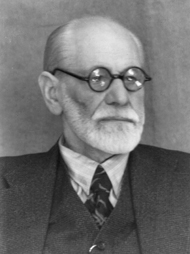
Sigmund Freud
|
 This is the atmosphere of doubt and skepticism in which Sigmund Freud (1856–1939) published his Studien über Hysterie (Studies on Hysteria) in 1895. Freud had not only undergone a conventional medical training in Vienna, he had also been a pupil of Charcot’s in Paris in preparation for his intended career as a neurologist. He was clearly hesitant about shifting into psychiatry, a field still considered with suspicion as highly speculative terrain in contrast to the certainties thought to buttress somatic medicine. He insisted on pointing out that he was fully conversant with electrotherapy and the other methods of treatment customary at the time. By opting to develop his own approach in what came to be known as “the talking cure,” he was taking a considerable professional risk. His unease at this juncture reveals how profoundly he had been shaped by the scientific imperative in the practice of medicine and how wary he was of departing from the prescribed rigorous set of procedures. But his clinical experiences with his patients soon convinced him that the standard physical treatments of his day – rest, massage, electrotherapy, hydrotherapy – were ineffective for “nervous” disorders. This is the atmosphere of doubt and skepticism in which Sigmund Freud (1856–1939) published his Studien über Hysterie (Studies on Hysteria) in 1895. Freud had not only undergone a conventional medical training in Vienna, he had also been a pupil of Charcot’s in Paris in preparation for his intended career as a neurologist. He was clearly hesitant about shifting into psychiatry, a field still considered with suspicion as highly speculative terrain in contrast to the certainties thought to buttress somatic medicine. He insisted on pointing out that he was fully conversant with electrotherapy and the other methods of treatment customary at the time. By opting to develop his own approach in what came to be known as “the talking cure,” he was taking a considerable professional risk. His unease at this juncture reveals how profoundly he had been shaped by the scientific imperative in the practice of medicine and how wary he was of departing from the prescribed rigorous set of procedures. But his clinical experiences with his patients soon convinced him that the standard physical treatments of his day – rest, massage, electrotherapy, hydrotherapy – were ineffective for “nervous” disorders.
 Studies on Hysteria affords a fascinating glimpse of the genesis of “the talking cure.” For his first patient, Emmy von N., a wealthy German widow with two daughters, Freud began by applying all the accepted treatments. While massaging her daily, he noticed how she started to talk as if casually, producing each time the memories and associations that had occurred to her since their previous meeting. As soon as Freud realized that her talk was by no means as unintentional as it seemed, he hit upon the cornerstone of psychoanalysis, the principle of free association. Studies on Hysteria affords a fascinating glimpse of the genesis of “the talking cure.” For his first patient, Emmy von N., a wealthy German widow with two daughters, Freud began by applying all the accepted treatments. While massaging her daily, he noticed how she started to talk as if casually, producing each time the memories and associations that had occurred to her since their previous meeting. As soon as Freud realized that her talk was by no means as unintentional as it seemed, he hit upon the cornerstone of psychoanalysis, the principle of free association.
 With the other patients chronicled in the Studies, Freud turned his back on the normative physical therapies. Instead he began to experiment with ways to address the mind; for a while he tried hypnosis, a method used by Charcot and his followers, but he found it unsatisfactory. With one patient, Elisabeth von R., he placed his hands on her head in order to stimulate memories. However, this too he soon abandoned, eschewing all bodily contact so as to concentrate on intensive listening to his patients’ free associations as they lay in a relaxed position on a couch. He himself remained seated behind them, out of sight, interjecting only occasional comments. In this situation the physical, including the doctor’s gaze, is eliminated as far as possible, thereby directing the fullest attention onto the mind. With the other patients chronicled in the Studies, Freud turned his back on the normative physical therapies. Instead he began to experiment with ways to address the mind; for a while he tried hypnosis, a method used by Charcot and his followers, but he found it unsatisfactory. With one patient, Elisabeth von R., he placed his hands on her head in order to stimulate memories. However, this too he soon abandoned, eschewing all bodily contact so as to concentrate on intensive listening to his patients’ free associations as they lay in a relaxed position on a couch. He himself remained seated behind them, out of sight, interjecting only occasional comments. In this situation the physical, including the doctor’s gaze, is eliminated as far as possible, thereby directing the fullest attention onto the mind.
 If free association represents the means Freud more or less stumbled on as the tool to open up the hidden recesses of the mind, his most momentous contribution by far to the history of the mind-body relationship was his understanding of the existence of the unconscious and its role in human behavior. The concept of the unconscious, so conspicuously absent from Tuke, was an immense advance on the vague idea of the “imagination.” In his analysands’ apparently spontaneous talk, Freud came to recognize the manifestations of unconscious levels of the mind that surfaced in such formerly unexplained phenomena as forgetting, slips of the tongue and expressions of psychic distress translated into bodily symptoms (conversion). Freud drew by preference on images from the realm of archaeology, conceiving the mind as structured into three intercommunicating layers, the id, the ego, and the superego, all of which play a part in determining our actions. The mind is therefore perceived as organized like a site to be excavated. If free association represents the means Freud more or less stumbled on as the tool to open up the hidden recesses of the mind, his most momentous contribution by far to the history of the mind-body relationship was his understanding of the existence of the unconscious and its role in human behavior. The concept of the unconscious, so conspicuously absent from Tuke, was an immense advance on the vague idea of the “imagination.” In his analysands’ apparently spontaneous talk, Freud came to recognize the manifestations of unconscious levels of the mind that surfaced in such formerly unexplained phenomena as forgetting, slips of the tongue and expressions of psychic distress translated into bodily symptoms (conversion). Freud drew by preference on images from the realm of archaeology, conceiving the mind as structured into three intercommunicating layers, the id, the ego, and the superego, all of which play a part in determining our actions. The mind is therefore perceived as organized like a site to be excavated.
 Freud renewed the mind-body relationship by delineating the processes whereby emotions can unwittingly affect the body. His revolutionary insights laid the foundations for what George Engel denoted as the “biopsychosocial model,” in a series of articles published from the late 1970s onward [10]. This concept has gained wide acceptance in everyday life as we acknowledge that a headache may be triggered by annoyance, that anxiety may result in insomnia, or that a student facing a big exam may wake up with stomach pains. In a certain sense, then, the pendulum has swung back, and though our methodologies and instruments are broader in scope and infinitely more complex than those available to the earliest physicians, a wound in western perception of the human being, and particularly the sick individual, has healed. In theory, at least, the hyphen has been restored to the mind-body relationship, the psychological reintegrated with the physical. In medical practice, application of the biopsychosocial model is likely to be neither transparent nor simple, but the dialogue between mind and body is one to which even the most technologically advanced medicine must pay heed. Freud renewed the mind-body relationship by delineating the processes whereby emotions can unwittingly affect the body. His revolutionary insights laid the foundations for what George Engel denoted as the “biopsychosocial model,” in a series of articles published from the late 1970s onward [10]. This concept has gained wide acceptance in everyday life as we acknowledge that a headache may be triggered by annoyance, that anxiety may result in insomnia, or that a student facing a big exam may wake up with stomach pains. In a certain sense, then, the pendulum has swung back, and though our methodologies and instruments are broader in scope and infinitely more complex than those available to the earliest physicians, a wound in western perception of the human being, and particularly the sick individual, has healed. In theory, at least, the hyphen has been restored to the mind-body relationship, the psychological reintegrated with the physical. In medical practice, application of the biopsychosocial model is likely to be neither transparent nor simple, but the dialogue between mind and body is one to which even the most technologically advanced medicine must pay heed.
Acknowledgements
I would like to record my gratitude to C.F. Irons, III, MD, for so kindly reading and providing feedback on this piece; and thanks also to Dr. Anabel Aliaga-Buchenau for help with e-mail and other practical matters.
References

|
| 1 |
|
Rosenberg CE: Body and mind in nineteenth-century medicine. In: Epidemics and Other Studies in the History of Medicine.
New York, Cambridge University Press, 1992, p. 77.

|
| 2 |
|
Rather LJ: Mind and Body in Eighteenth-Century Medicine: A Study Based on Jerome Gaub’s “De regimine mentis”.
Berkeley, University of California Press, 1965.

|
| 3 |
|
Schiller F: A case of brain fever.
Clio Medica 1974;9:181–192.

|
| 4 |
|
Peterson AC: Brain fever in nineteenth-century literature: fact and fiction.
Victorian Studies 1976;19:445–464.

|
| 5 |
|
Cleaves M: Autobiography of a Neurasthene.
Boston, Graham Press, 1910.

|
| 6 |
|
Furst LR: “You have sprained your brain”: Margaret Cleaves’s autobiography of a neurasthene.
Nineteenth-Century Prose 1998;25:140–153.

|
| 7 |
|
Furst LR: Daniel Hack Tuke walking a tightrope.
Nineteenth-Century Prose 2000;27:60–74.

|
| 8 |
|
Charcot JM: L’hystére (Trillat E, ed).
Toulouse, 1971, p. 70.

|
| 9 |
|
Schivelbusch W: Geschichte der Eisenbahn. Munich, Hanser, 1978 [translated by Anselm Hollo: The Railway Journey: Trains and Travel in the Nineteenth Century. New York, Urizen, 1979].

|
| 10 |
|
Engel G: The need for a new medical model: a challenge for biomedicine.
Science 1977;196:129–136.

|
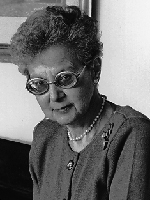
Lilian R. Furst is Marcel Bataillon Professor of Comparative Literature Emerita at the University of North Carolina at Chapel Hill. Born in Vienna and educated in England, France and Switzerland, she was awarded her PhD by Cambridge University. She has lived in the United States since 1971 and taught at various institutions, including Harvard, Stanford, Dartmouth and the College of William and Mary, before she joined the UNC-Chapel Hill faculty in 1986. Professor Furst has published widely on romanticism, realism and naturalism. Her current research interests are in the field of literature and medicine, and post-Holocaust writing. This article draws on a chapter in her book Idioms of Distress: Psychosomatic Disorders in Medical and Imaginative Literature (State University of New York Press, 2003).
Lilian R. Furst
106 Arbutus Place
Chapel Hill, NC 27514-8504
U.S.A.
|
